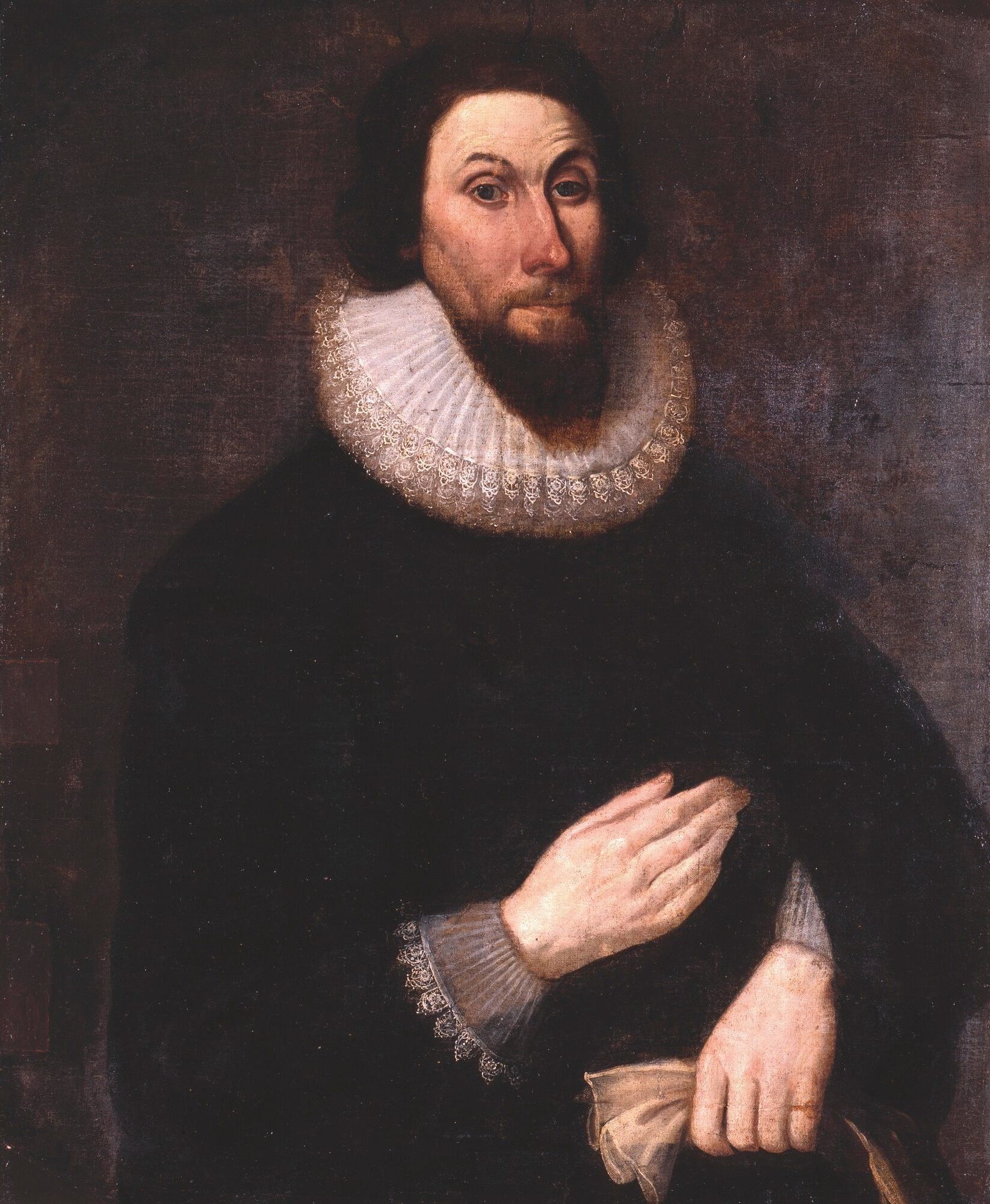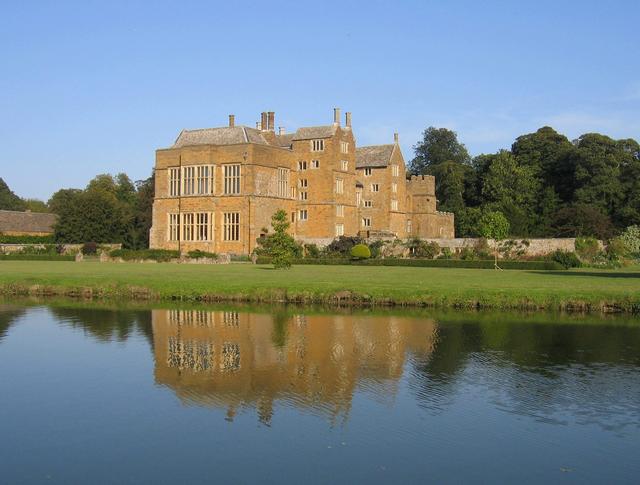|
Brumby Hall
Brumby Hall is a late 17th-century residence and a Grade II* Listed building in Scunthorpe, North Lincolnshire. History The hall was constructed in the 17th century; a sundial dated to 1637 is present onsite. It was extended in the late 18th century by George Pycock for Thomas Pindar, and further altered and extended in the 19th and 20th centuries. In the early 17th century, the hall was home to Richard Bellingham (later Governor of the Massachusetts Bay Colony), and latterly to Nathaniel Fiennes Nathaniel Fiennes (c. 1608 – 16 December 1669) was a younger son of the Puritan nobleman and politician, William Fiennes, 1st Viscount Saye and Sele. He sat in the House of Commons at various times between 1640 and 1659, and served with the .... File:Brumby Hall - geograph.org.uk - 832639.jpg, Brumby Hall File:Brumby Hall, Scunthorpe - geograph.org.uk - 592181.jpg, Crest and sundial File:Brumby Hall - geograph.org.uk - 1650129.jpg, Gates References 17th-century establish ... [...More Info...] [...Related Items...] OR: [Wikipedia] [Google] [Baidu] |
Listed Building
In the United Kingdom, a listed building or listed structure is one that has been placed on one of the four statutory lists maintained by Historic England in England, Historic Environment Scotland in Scotland, in Wales, and the Northern Ireland Environment Agency in Northern Ireland. The term has also been used in the Republic of Ireland, where buildings are protected under the Planning and Development Act 2000. The statutory term in Ireland is " protected structure". A listed building may not be demolished, extended, or altered without special permission from the local planning authority, which typically consults the relevant central government agency, particularly for significant alterations to the more notable listed buildings. In England and Wales, a national amenity society must be notified of any work to a listed building which involves any element of demolition. Exemption from secular listed building control is provided for some buildings in current use for worship, ... [...More Info...] [...Related Items...] OR: [Wikipedia] [Google] [Baidu] |
Scunthorpe
Scunthorpe () is an industrial town and unparished area in the unitary authority of North Lincolnshire in Lincolnshire, England of which it is the main administrative centre. Scunthorpe had an estimated total population of 82,334 in 2016. A predominantly industrial town, the town is the United Kingdom's largest steel processing centre and is also known as the "Industrial Garden Town". It is the third largest settlement in Lincolnshire, after Lincoln and Grimsby. The Member of Parliament for Scunthorpe is Conservative politician Holly Mumby-Croft. History Scunthorpe as a town came into existence due to the exploitation of the local ironstone resources, and subsequent formation of iron works from the 1850s onwards. The regional population grew from 1,245 in 1851 to 11,167 in 1901 and 45,840 in 1941. During the expansion Scunthorpe expanded to include the former villages of Scunthorpe, Bottesford, Frodingham, Crosby, Brumby and Ashby. Scunthorpe became an urban district in 18 ... [...More Info...] [...Related Items...] OR: [Wikipedia] [Google] [Baidu] |
North Lincolnshire
North Lincolnshire is a unitary authority area in Lincolnshire, England, with a population of 167,446 in the 2011 census. The borough includes the towns of Scunthorpe, Brigg, Haxey, Crowle, Epworth, Bottesford, Kirton in Lindsey and Barton-upon-Humber. North Lincolnshire is part of the Yorkshire and Humber region. North Lincolnshire was formed following the abolition of Humberside County Council in 1996, when four unitary authorities replaced it, North Lincolnshire and North East Lincolnshire, on the south bank of the Humber Estuary, and the East Riding of Yorkshire and Kingston upon Hull on the north bank. It is home to the Haxey Hood, a traditional event which takes place in Haxey on 6 January, a large football scrum where a leather tube (the "hood") is pushed to one of four pubs, where it remains until next year's game. In 2015, North Lincolnshire Council began discussions with the other nine authorities in the Greater Lincolnshire area as part of a devolution bid. I ... [...More Info...] [...Related Items...] OR: [Wikipedia] [Google] [Baidu] |
Richard Bellingham
Richard Bellingham (c. 1592 – 7 December 1672) was a colonial magistrate, lawyer, and several-time governor of the Massachusetts Bay Colony, and the last surviving signatory of the colonial charter at his death. A wealthy lawyer in Lincolnshire prior to his departure for the New World in 1634, he was a liberal political opponent of the moderate John Winthrop, arguing for expansive views on suffrage and lawmaking, but also religiously somewhat conservative, opposing (at times quite harshly) the efforts of Quakers and Baptists to settle in the colony. He was one of the architects of the Massachusetts Body of Liberties, a document embodying many sentiments also found in the United States Bill of Rights. Although he was generally in the minority during his early years in the colony, he served ten years as colonial governor, most of them during the delicate years of the Restoration (England), English Restoration, when Charles II of England, King Charles II scrutinized the behavior ... [...More Info...] [...Related Items...] OR: [Wikipedia] [Google] [Baidu] |
Massachusetts Bay Colony
The Massachusetts Bay Colony (1630–1691), more formally the Colony of Massachusetts Bay, was an English settlement on the east coast of North America around the Massachusetts Bay, the northernmost of the several colonies later reorganized as the ''Province of Massachusetts Bay''. The lands of the settlement were in southern New England, with initial settlements on two natural harbors and surrounding land about apart—the areas around Salem and Boston, north of the previously established Plymouth Colony. The territory nominally administered by the Massachusetts Bay Colony covered much of central New England, including portions of Massachusetts, Maine, New Hampshire, and Connecticut. The Massachusetts Bay Colony was founded by the owners of the Massachusetts Bay Company, including investors in the failed Dorchester Company, which had established a short-lived settlement on Cape Ann in 1623. The colony began in 1628 and was the company's second attempt at colonization. It was su ... [...More Info...] [...Related Items...] OR: [Wikipedia] [Google] [Baidu] |
Nathaniel Fiennes
Nathaniel Fiennes (c. 1608 – 16 December 1669) was a younger son of the Puritan nobleman and politician, William Fiennes, 1st Viscount Saye and Sele. He sat in the House of Commons at various times between 1640 and 1659, and served with the Parliamentarian army in the First English Civil War. In 1643, he was dismissed from the army for alleged incompetence after surrendering Bristol and sentenced to death before being pardoned. Exonerated in 1645, he actively supported Oliver Cromwell during The Protectorate, being Lord Keeper of the Great Seal from 1655 to 1659. Elected to the Long Parliament in November 1640, Fiennes played a leading role in the opposition to Charles I prior to the outbreak of civil war in August 1642. In the early years of the war, his objections to any form of established church aligned him with Cromwell and the Independents, rather than the moderate Presbyterians who dominated Parliament. However, his belief in a balanced political solution meant that ... [...More Info...] [...Related Items...] OR: [Wikipedia] [Google] [Baidu] |
17th-century Establishments In England
The 17th century lasted from January 1, 1601 ( MDCI), to December 31, 1700 ( MDCC). It falls into the early modern period of Europe and in that continent (whose impact on the world was increasing) was characterized by the Baroque cultural movement, the latter part of the Spanish Golden Age, the Dutch Golden Age, the French ''Grand Siècle'' dominated by Louis XIV, the Scientific Revolution, the world's first public company and megacorporation known as the Dutch East India Company, and according to some historians, the General Crisis. From the mid-17th century, European politics were increasingly dominated by the Kingdom of France of Louis XIV, where royal power was solidified domestically in the civil war of the Fronde. The semi-feudal territorial French nobility was weakened and subjugated to the power of an absolute monarchy through the reinvention of the Palace of Versailles from a hunting lodge to a gilded prison, in which a greatly expanded royal court could be more easily ke ... [...More Info...] [...Related Items...] OR: [Wikipedia] [Google] [Baidu] |
Buildings And Structures In Lincolnshire
A building, or edifice, is an enclosed structure with a roof and walls standing more or less permanently in one place, such as a house or factory (although there's also portable buildings). Buildings come in a variety of sizes, shapes, and functions, and have been adapted throughout history for a wide number of factors, from building materials available, to weather conditions, land prices, ground conditions, specific uses, prestige, and aesthetic reasons. To better understand the term ''building'' compare the list of nonbuilding structures. Buildings serve several societal needs – primarily as shelter from weather, security, living space, privacy, to store belongings, and to comfortably live and work. A building as a shelter represents a physical division of the human habitat (a place of comfort and safety) and the ''outside'' (a place that at times may be harsh and harmful). Ever since the first cave paintings, buildings have also become objects or canvasses of much artistic ... [...More Info...] [...Related Items...] OR: [Wikipedia] [Google] [Baidu] |
Grade II* Listed Buildings In North Lincolnshire
There are over 20,000 Grade II* listed buildings in England. This page is a list of these buildings in the district of North Lincolnshire in Lincolnshire Lincolnshire (abbreviated Lincs.) is a Counties of England, county in the East Midlands of England, with a long coastline on the North Sea to the east. It borders Norfolk to the south-east, Cambridgeshire to the south, Rutland to the south-we .... North Lincolnshire Notes External links {{DEFAULTSORT:North Lincolnshire Lists of Grade II* listed buildings in Lincolnshire Borough of North Lincolnshire ... [...More Info...] [...Related Items...] OR: [Wikipedia] [Google] [Baidu] |







